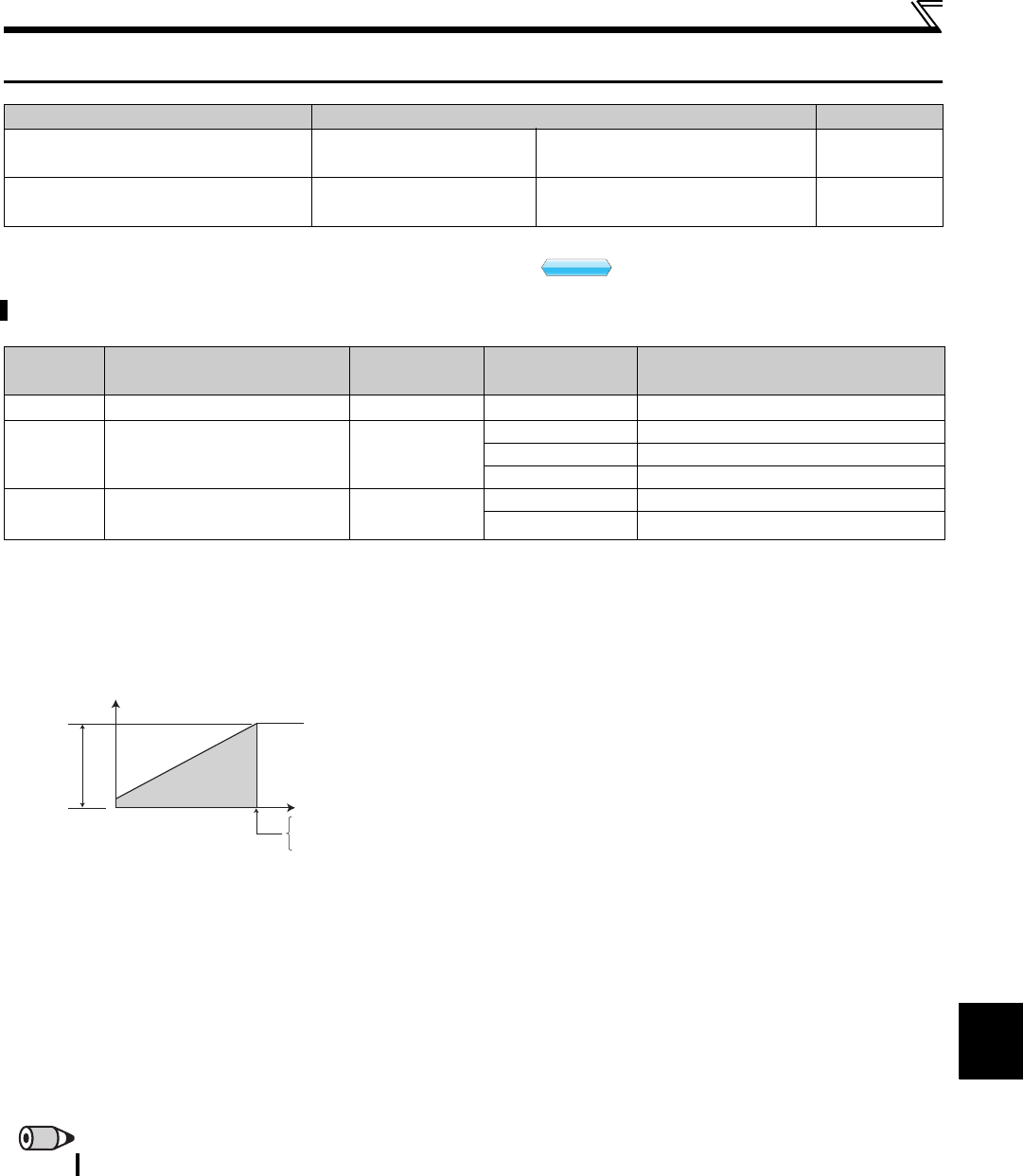
85
Set V/F pattern
4
PARAMETERS
4.5 Set V/F pattern
4.5.1 Base frequency, voltage (Pr. 3, Pr. 19, Pr. 47)
* The above parameters can be set when Pr. 160 Extended function display selection = "0". (Refer to page 162)
(2) Set two kinds of base frequencies (Pr. 47)
To change the base frequency when switching two types of motors with one inverter, use the Pr. 47 Second V/F (base
frequency).
Pr. 47 Second V/F (base frequency) is valid when the RT signal is on. Set "3" in any of Pr. 178 to Pr. 182 (input terminal function
selection) and assign the RT signal.
Purpose Parameter that should be Set Refer to Page
Set motor ratings
Base frequency,
Base frequency voltage
Pr. 3, Pr. 19, Pr. 47
85
Select a V/F pattern according to
applications.
Load pattern selection Pr. 14
87
Used to adjust the inverter outputs (voltage, frequency) to the motor rating.
Parameter
Number
Name Initial Value Setting Range Description
3 Base frequency
60Hz 0 to 400Hz Rated motor frequency (50Hz/60Hz)
19 ∗ Base frequency voltage
9999
0 to 1000V Base voltage
8888 95% of power supply voltage
9999 Same as power supply voltage
47 ∗
Second V/F (base
frequency)
9999
0 to 400Hz Base frequency when the RT signal is on
9999 Second V/F invalid
(1) Base frequency setting (Pr. 3)
When operating a standard motor, generally set the rated
frequency of the motor to Pr. 3 Base frequency. When running the
motor using commercial power supply-inverter switch-over
operation, set Pr. 3 to the same value as the power supply
frequency.
If the frequency given on the motor rating plate is "50Hz" only,
always set to "50Hz". Leaving the base frequency unchanged from
"60Hz" may make the voltage too low and the torque insufficient. It
may result in an inverter trip due to overload.
Special care must be taken when "1" (variable torque load) is set in
Pr. 14 Load pattern selection .
When using the Mitsubishi constant-torque motor, set Pr. 3 to
60Hz.
REMARKS
The RT signal acts as the second function selection signal and makes the other second functions valid. (Refer to page 116)
V/F
V/F
V/F
Pr. 19
Output voltage (V)
Output frequency
(Hz)
Pr. 3
Pr. 47


















